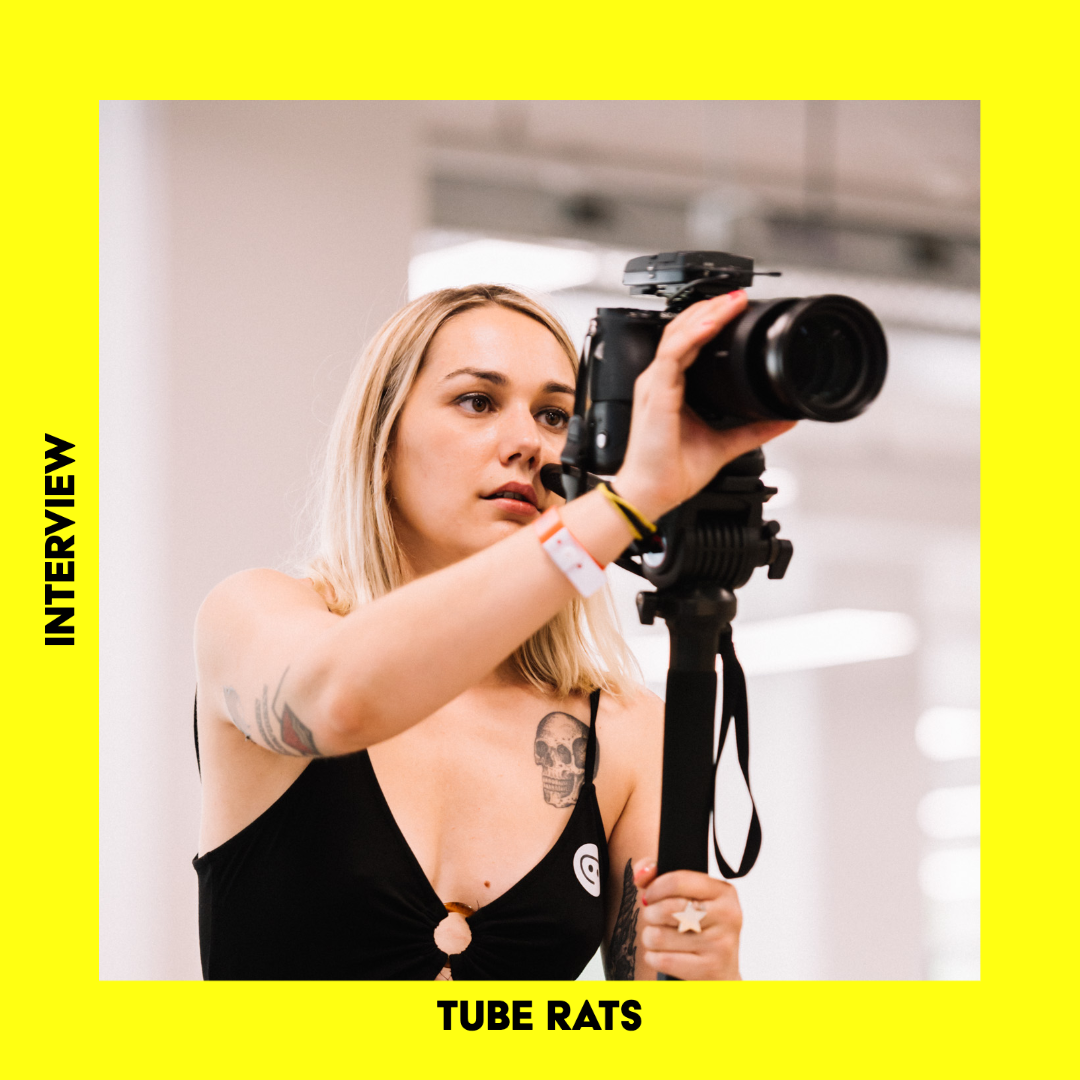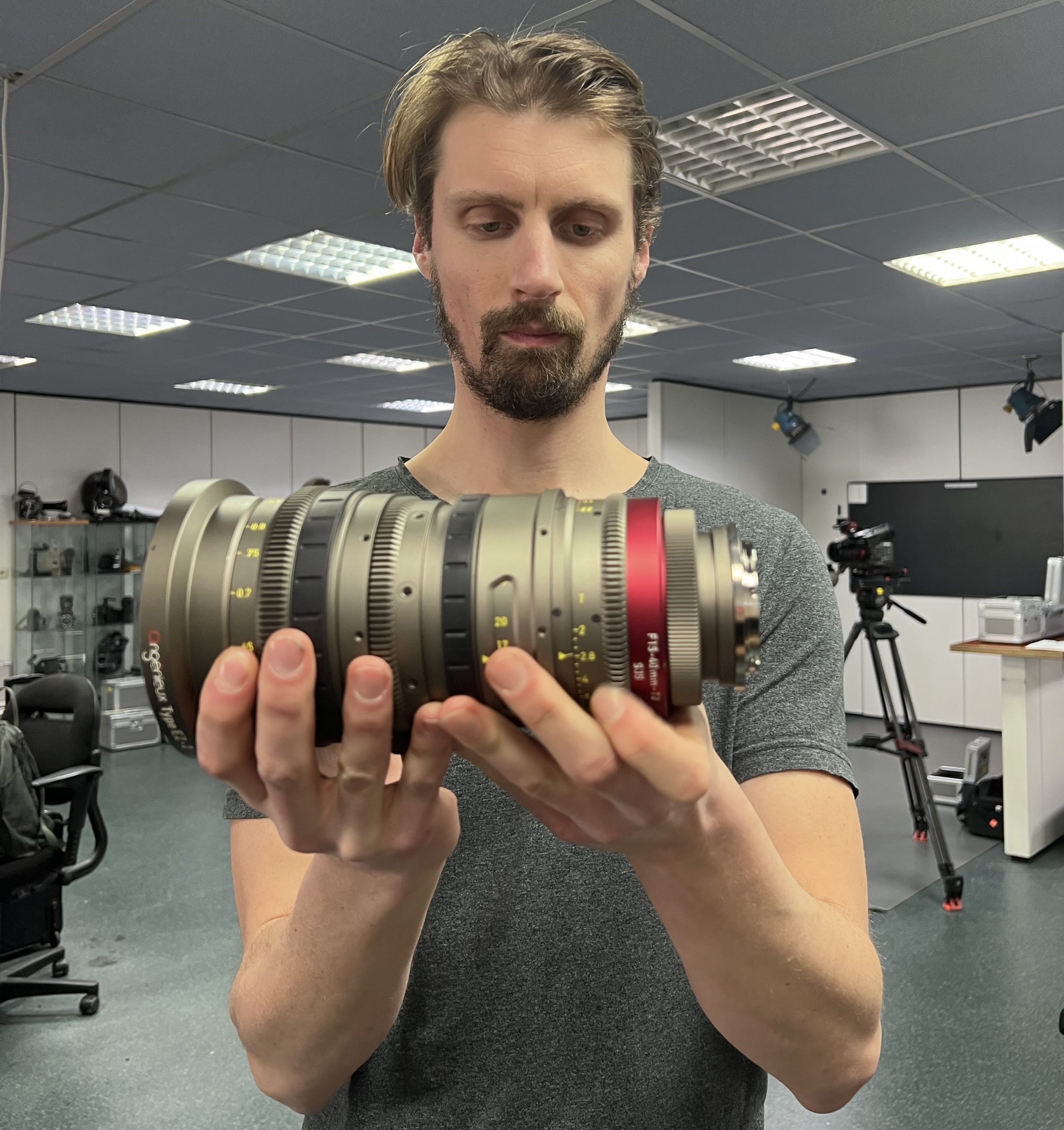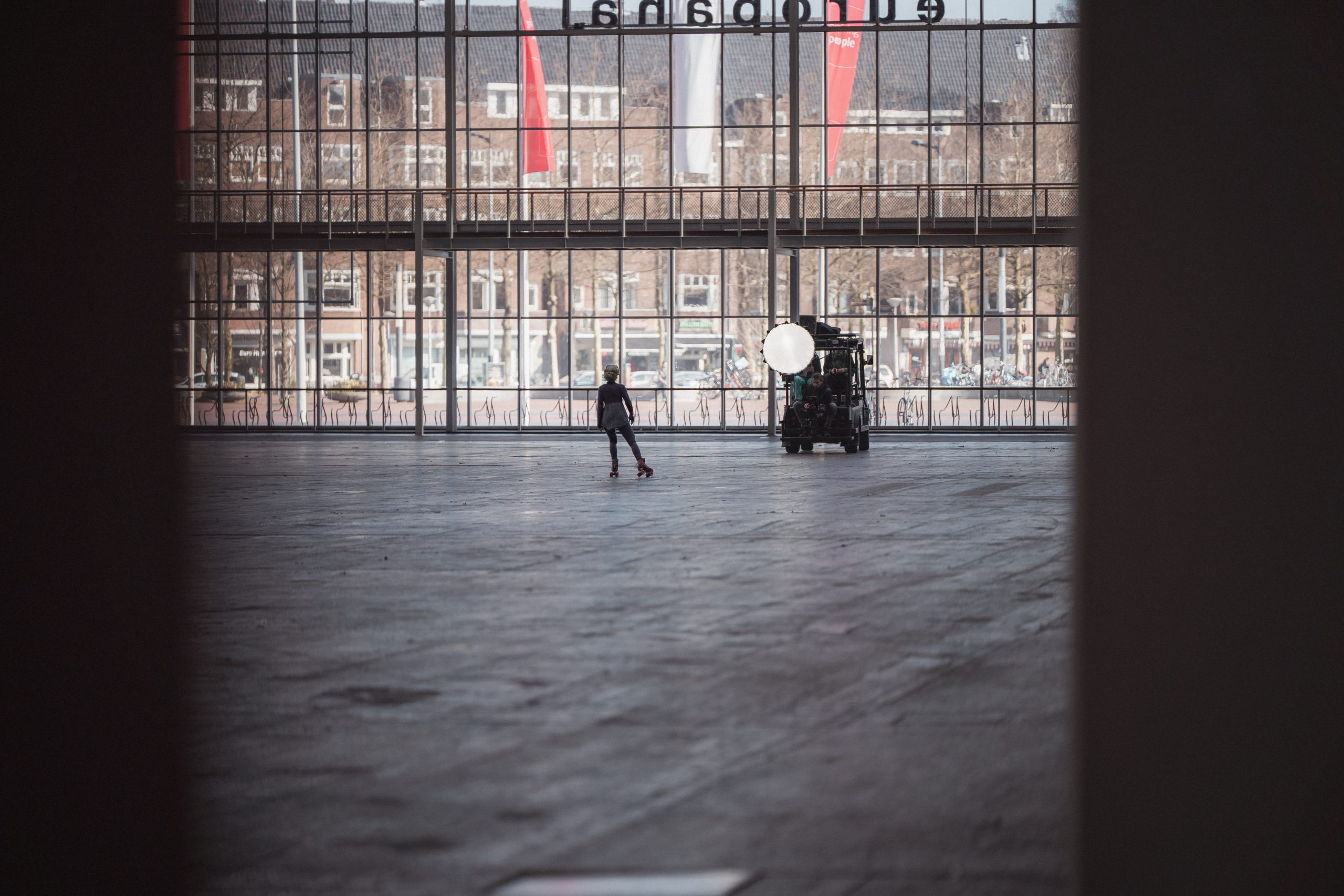The main premise of the documentary Women on a Roll is that women feel free when they are roller skating. This is something that our director Alma Tabernero experienced herself, and she felt the urge to recreate that on the screen, through the eyes of other female skaters. For us, it was key to showcase what these women experience while they are on their roller skates. All the decisions we would take during the process of the movie needed to serve that purpose. But how do you film the feeling of freedom? Let’s hear from the Director of Photography, Sacha Glastra van Loon, how he approached the project.
I think the most important thing is to give the person we are filming the space to do what they need to do. At the same time as a cinematographer you want to get as close to the subject as you can, so we as a viewer (literally) feel closer to someone. These two things conflict with each other so you have to think about how to get closer, without invading the space of the talent. The first thing that was important for us was the ability to move along or around the skaters. There are multiple ways to achieve this, but since we are on a budget we had to think smart.
At first we did a test shoot where I was on skates with a small gimbal and I tried to follow the skater, but we quickly found out that it was very hard to keep good framing while skating at the same time. It would be too inefficient for the short time that we had with each talent and on top of that we wanted to use a more professional camera (Panasonic EVA1), which is a lot heavier when you put all the bells and whistles on it. So then it was decided that the camera also had to be on wheels. For the locations at Roller Dreams and the Eye film museum we chose to use a Matador doorway dolly on air tyres, because the floor was flat and smooth enough to use it without laying down tracks for each shot. It also gave us more freedom to move quickly.
We only used the tracks for one setup to achieve a specific shot where we were very low to the ground and moving in a half circle around the skater. The dolly gives the camera operator a solid and smooth base to make nicely framed shots from the creative and sometimes unpredictable movements of the skaters.
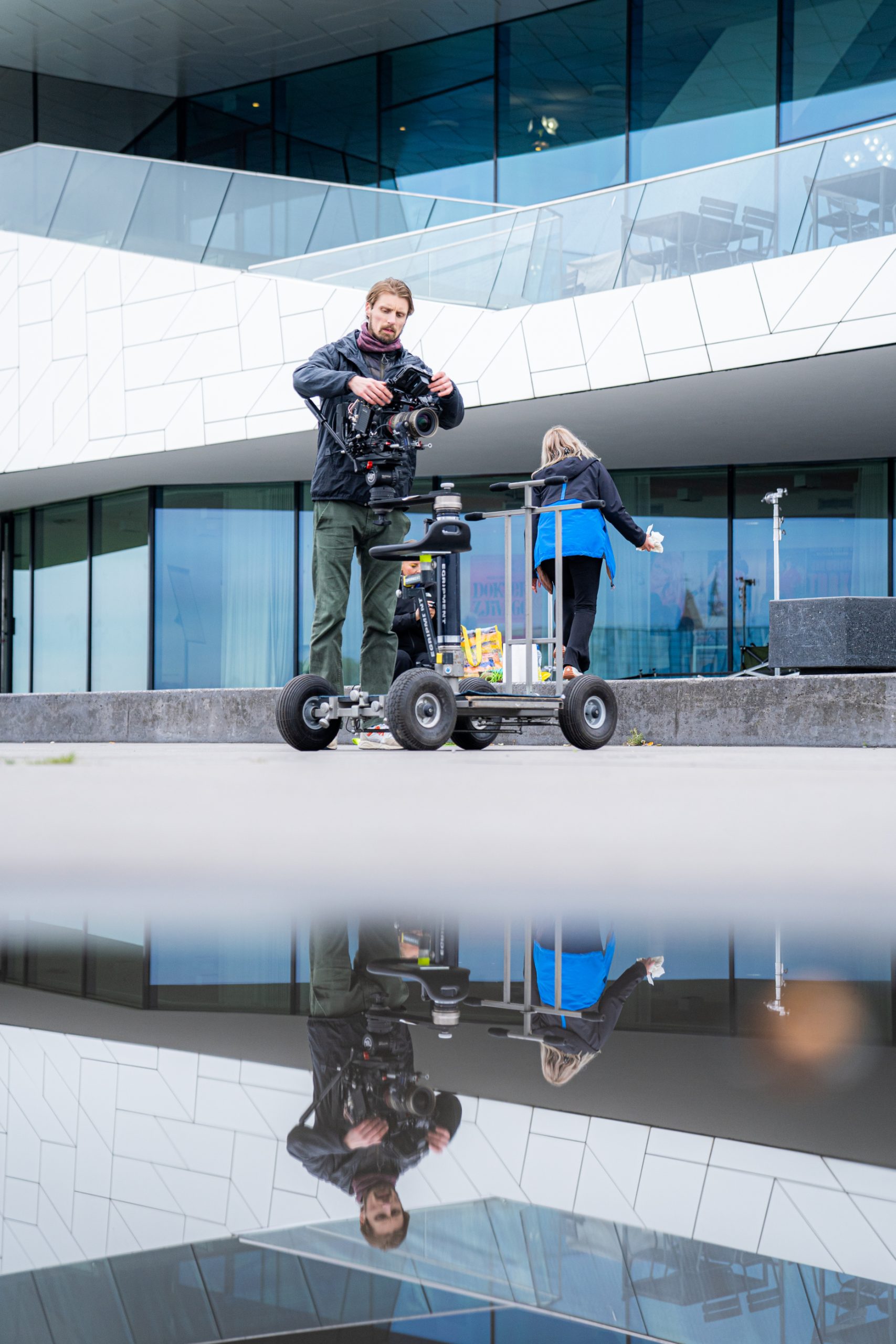
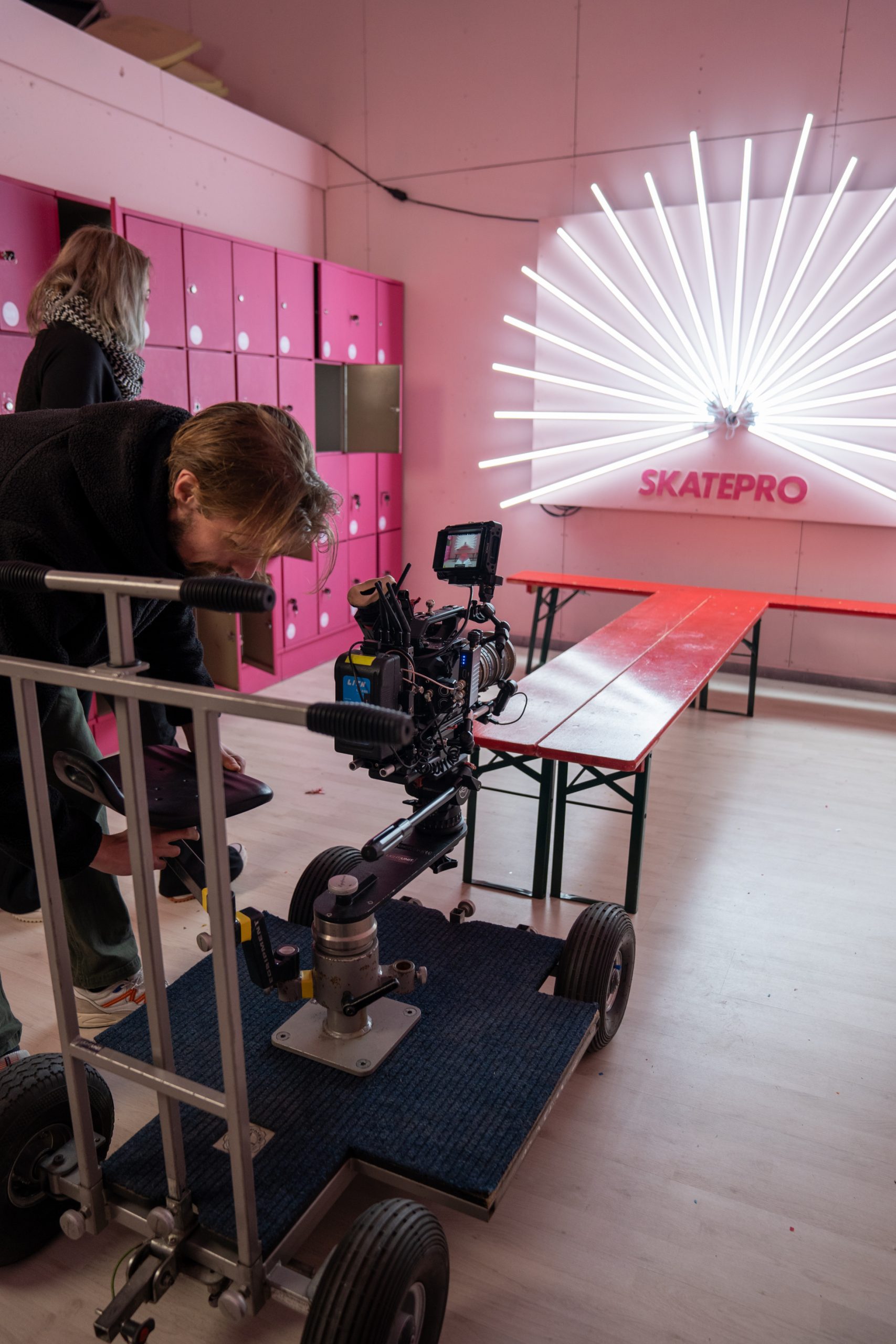
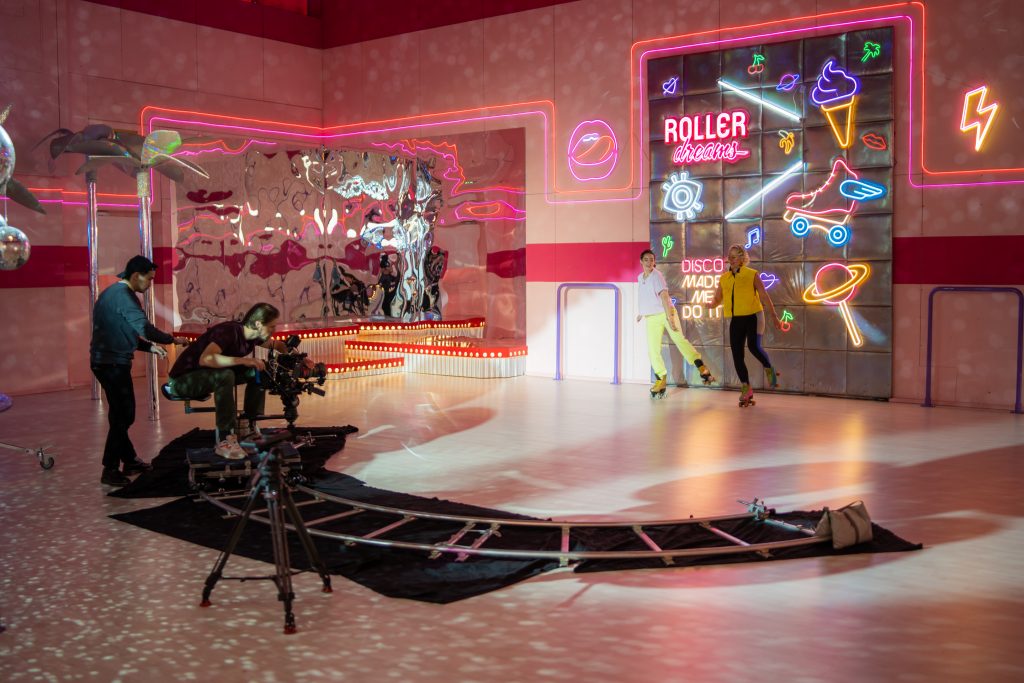
For the shoot with the women of Head Over Wheels I made the camera as light as possible so it would fit in a DJI Ronin and then combined it with a harness from Proaim including the Flycam Flowline Placid Two Axis Spring Arm. It gave me the freedom to walk all through the space and around the skaters and create smooth, floating shots. The reason why we didn’t use this for the whole shoot is because it only works with a really wide lens with a closed aperture and since we didn’t have the luxury to have a 1st Assistant Camera, who can keep the focus that day.
The location of the RAI hall 1 was very special, because it’s a huge building which was completely empty and we wanted to make use of that immense space. For this we needed some more professional help, so we arranged a grip (Jelle van der Weide, from Gripwise), who came with an electric golf camera car. The camera operator could sit on the back as well as on the front of the car which gave a unique angle, since we could now keep up throughout the complete space of the RAI. It was amazing to be able to keep up with Renda, who was skating at full speed while doing her moves."
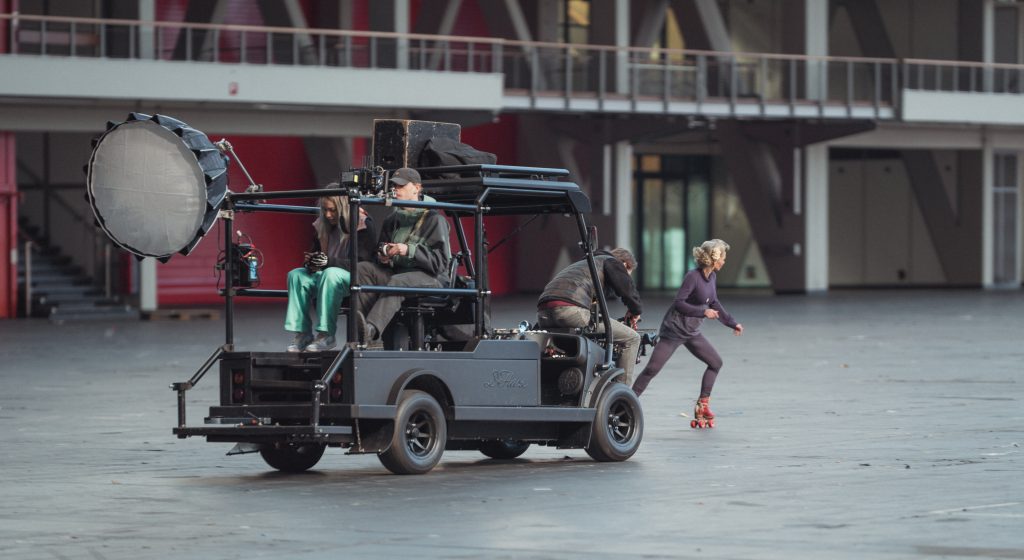
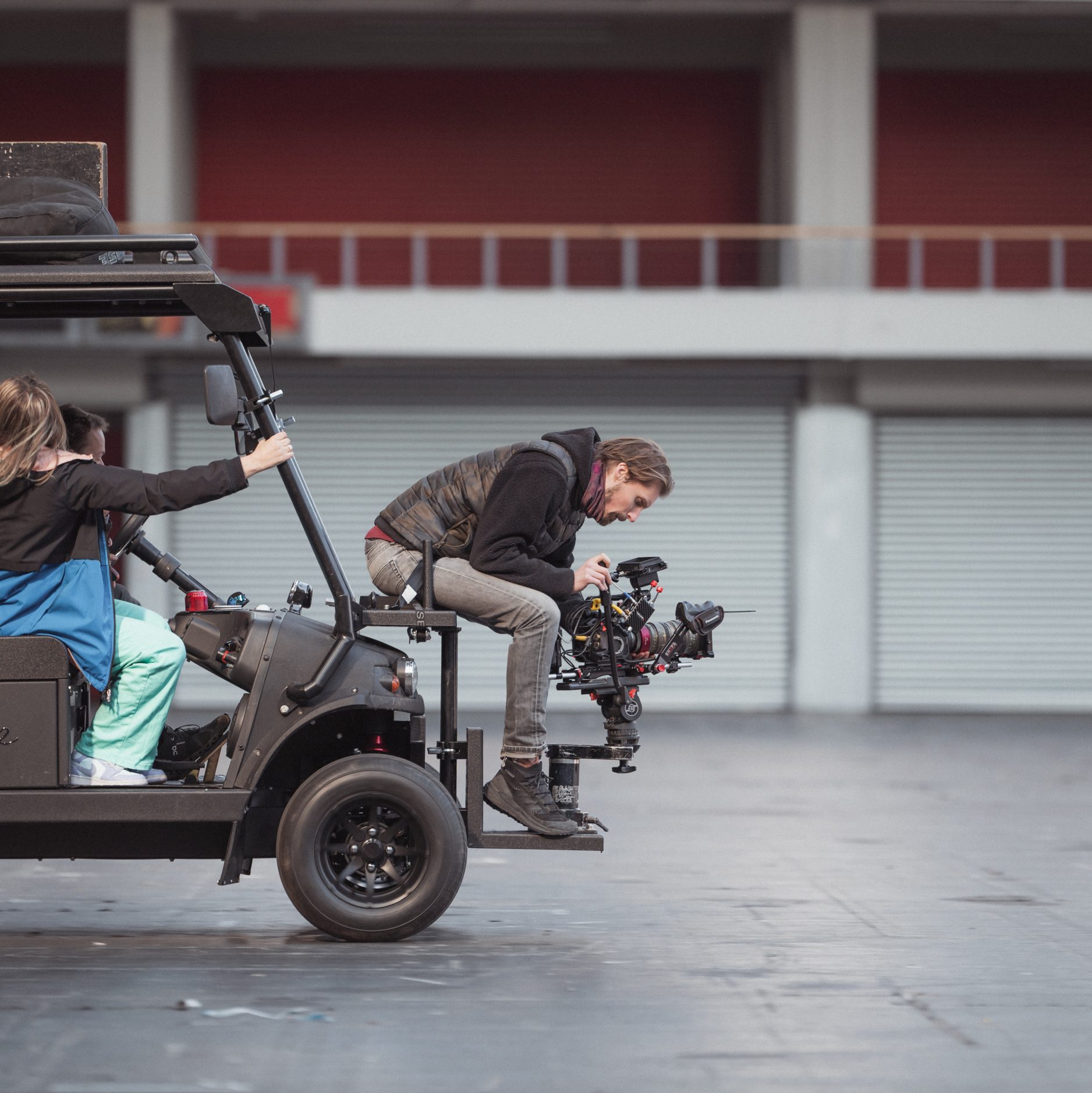
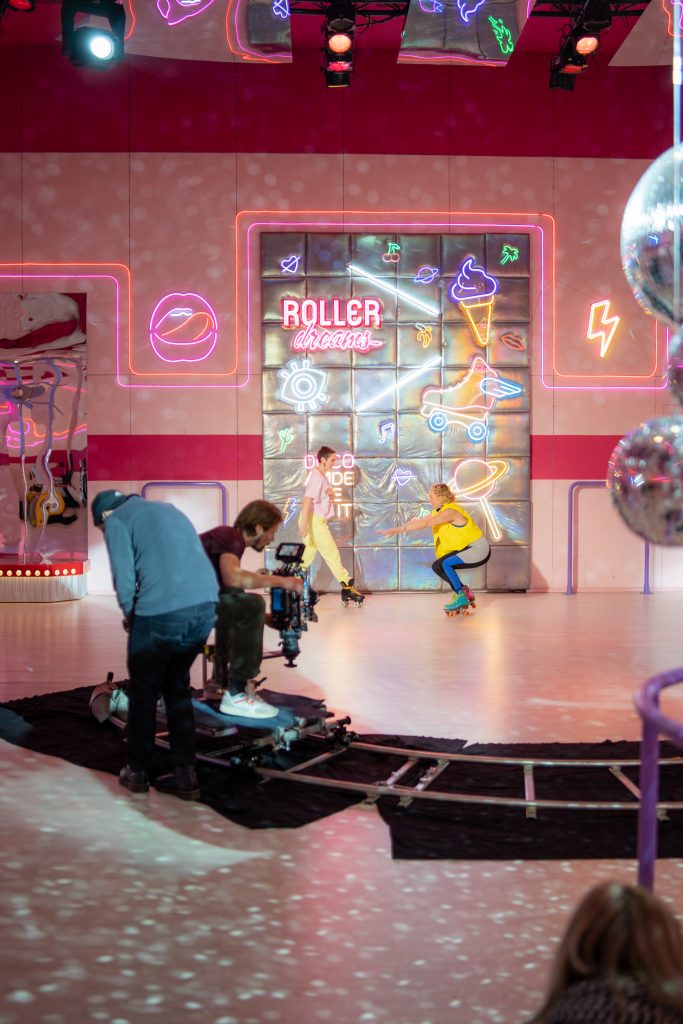
Do you need technical help for your project?
Contact our expert Sacha Glastra van Loon and he will advise you on the best solution.
Or send us a message with your project idea!

